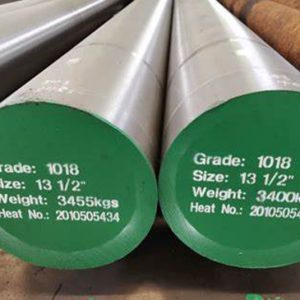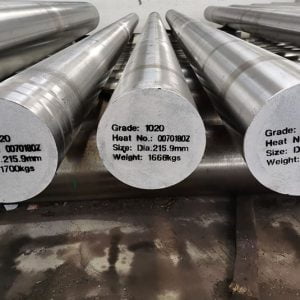Introduction
AISI 1045 steel is a medium carbon steel known for its strength, toughness, and machinability. This versatile material is widely used in various industries, including automotive, construction, and manufacturing. In this comprehensive guide, we will explore the mechanical properties of AISI 1045 steel, its applications, heat treatment processes, and how it compares to other carbon steels. By the end of this article, you will have a thorough understanding of why AISI 1045 steel is a popular choice for many engineering applications.
What is AISI 1045 Steel?

AISI 1045 steel is a high-strength medium carbon steel that contains approximately 0.45% carbon, 0.60% to 0.90% manganese, and trace amounts of other elements like phosphorus and sulfur. The composition of AISI 1045 steel gives it excellent mechanical properties, making it suitable for various applications where strength and wear resistance are critical. Here’s a breakdown of its chemical composition:
| Element | Percentage (%) |
|---|---|
| Carbon (C) | 0.43 – 0.50 |
| Manganese (Mn) | 0.60 – 0.90 |
| Phosphorus (P) | ≤ 0.040 |
| Sulfur (S) | ≤ 0.050 |
| Iron (Fe) | Balance |
Mechanical Properties of AISI 1045 Steel
Understanding the mechanical properties of AISI 1045 steel is crucial for selecting the right material for your projects. The key mechanical properties include tensile strength, yield strength, hardness, and elongation. Here’s a detailed look at each of these properties:
Tensile Strength
Tensile strength refers to the maximum stress that AISI 1045 steel can withstand while being stretched or pulled before breaking. It is a measure of the material’s resistance to deformation. The typical tensile strength of AISI 1045 steel ranges from 570 to 700 MPa (megapascals).
Yield Strength
Yield strength is the stress at which a material begins to deform plastically. Beyond this point, permanent deformation occurs. AISI 1045 steel has a yield strength of approximately 310 MPa, indicating its ability to withstand substantial loads without permanent deformation.
Hardness
Hardness measures the resistance of AISI 1045 steel to surface indentation or abrasion. It is often measured using the Brinell, Rockwell, or Vickers hardness tests. The Brinell hardness of AISI 1045 steel is typically around 170-210 HB (Brinell Hardness Number).
Elongation
Elongation is the measure of the material’s ability to stretch before breaking and is expressed as a percentage. AISI 1045 steel typically exhibits an elongation of around 16-20%, indicating good ductility and the ability to absorb energy before fracturing.
Impact Strength
Impact strength measures the material’s ability to resist shock loading. AISI 1045 steel has moderate impact strength, making it suitable for applications where sudden forces or impacts may occur.
Heat Treatment of AISI 1045 Steel
Heat treatment is a crucial process to enhance the mechanical properties of AISI 1045 steel. The heat treatment processes include annealing, normalizing, quenching, and tempering. Each process affects the steel’s properties differently.
Annealing
Annealing involves heating 1045 steel to a specific temperature and then slowly cooling it. This process softens the steel, making it easier to machine and improving its ductility. The typical annealing temperature for AISI 1045 steel is around 800-850°C.
Normalizing
Normalizing involves heating the steel to a temperature above its critical point, followed by air cooling. This process refines the grain structure, enhances the steel’s strength and toughness, and improves its machinability. The normalizing temperature for AISI 1045 steel is usually around 870-900°C.
Quenching
Quenching involves heating the steel to a high temperature and then rapidly cooling it in water or oil. This process increases the hardness and strength of AISI 1045 steel. The quenching temperature for AISI 1045 steel is typically around 820-860°C.
Tempering
Tempering follows quenching and involves reheating the steel to a lower temperature, then cooling it. This process reduces brittleness and enhances the toughness of 1045 steel. The tempering temperature varies depending on the desired mechanical properties but generally ranges from 150-650°C.
Applications of 1045 Steel
AISI 1045 steel’s excellent mechanical properties make it suitable for a wide range of applications. Some common uses include:
Automotive Components: 1045 steel is used to manufacture crankshafts, gears, axles, and other critical automotive parts due to its strength and wear resistance.
Machinery Parts: The steel is used for making machinery components such as shafts, couplings, and pins, where high strength and toughness are essential.
Construction: In construction,1045 steel is used for making structural parts, bolts, and nuts, providing durability and reliability.
Tools and Dies: The steel’s hardness and machinability make it ideal for producing various tools and dies.
Industrial Equipment: 1045 steel is used in manufacturing industrial equipment that requires high strength and resistance to wear and tear.
Comparing AISI 1045 Steel to Other Carbon Steels

1045 steel is often compared to other carbon steels to understand its advantages and limitations. Here’s a comparison with AISI 1018 and AISI 1060 steels:
| Property | AISI 1018 | AISI 1045 | AISI 1060 |
|---|---|---|---|
| Carbon Content (%) | 0.18 | 0.43 – 0.50 | 0.55 – 0.65 |
| Tensile Strength (MPa) | 440 – 470 | 570 – 700 | 750 – 900 |
| Yield Strength (MPa) | 370 | 310 | 350 |
| Hardness (HB) | 126 | 170 – 210 | 180 – 230 |
| Elongation (%) | 15 – 20 | 16 – 20 | 12 – 16 |
Conclusion
AISI 1045 steel is a versatile medium carbon steel with excellent mechanical properties, making it suitable for a wide range of applications in various industries. Its strength, toughness, and machinability, combined with the ability to enhance these properties through heat treatment, make it a popular choice for engineers and manufacturers. Understanding the mechanical properties, heat treatment processes, and applications of AISI 1045 steel is essential for selecting the right material for your project needs.
FAQ
Q: What are the key mechanical properties of 1045 steel?
A: The key mechanical properties of 1045 steel include tensile strength (570-700 MPa), yield strength (310 MPa), hardness (170-210 HB), and elongation (16-20%).
Q: How does heat treatment affect AISI steel?
A: Heat treatment processes such as annealing, normalizing, quenching, and tempering can enhance the mechanical properties of 1045 steel, including its strength, hardness, and toughness.
Q: What are the common applications of 1045 steel?
A: Common applications of 1045 steel include automotive components, machinery parts, construction materials, tools and dies, and industrial equipment.
Q: How does 1045 steel compare to other carbon steels?
A: Compared to 1018 and AISI 1060 steels, AISI 1045 steel offers a balanced combination of strength, hardness, and ductility, making it suitable for a variety of applications.
Q: Can 1045 steel be welded?
A: Yes,1045 steel can be welded, but preheating and post-weld heat treatment are recommended to prevent cracking and ensure the integrity of the weld.





